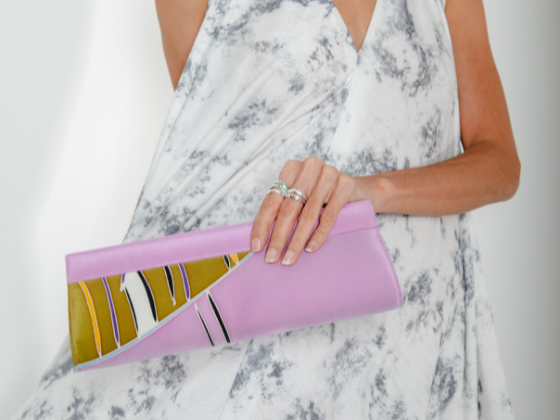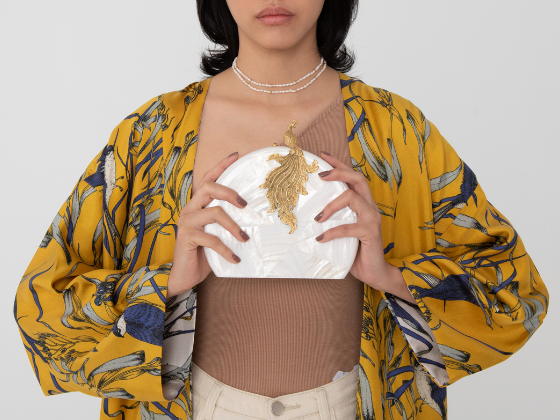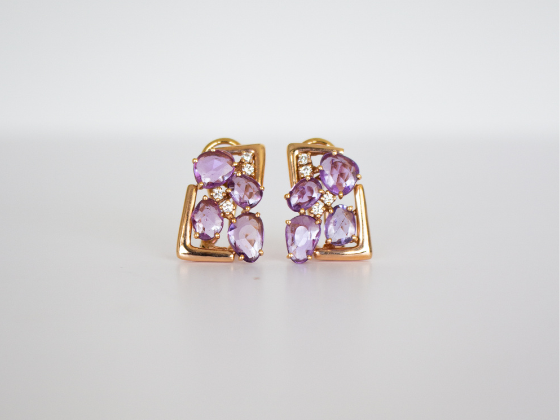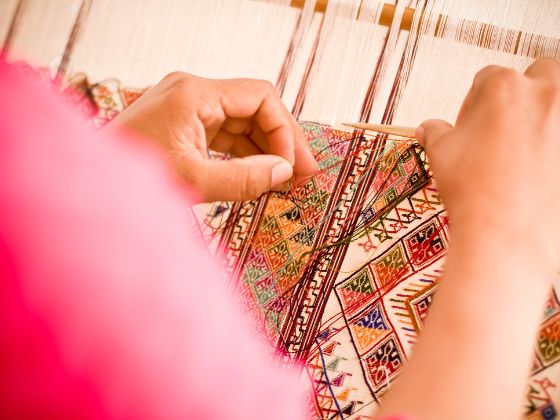By Rahemma Azwar on September 2nd, 2021
Myth and legend have long been used as a source of inspiration for artists. They use it to seek greater meaning in a new creation, a link to a web of stories much larger than their own. With the arrival of Neil Felipp’s intricate Simian Minaudière, we’re exploring his other designs and diving deep into why these amazing pieces represent far more than just a bag
Medusa
(as seen in Medusa and Midas Minaudière)


Medusa, the monster who could turn men into stone with a single glance, was once a beautiful mortal woman. But an ill-fated romance with Poseidon, God of the Oceans, changed her fate forever. According to the original Greek myth, Medusa, who was a priestess for the Goddess Athena, broke a vow of chastity by consummating her relationship in Athena’s temple. She then faced the Goddess’ wrath with a curse that forever changed her into the snake-haired monster.
However, in a later retelling by the Roman poet Ovid, Athena’s curse is portrayed as a protection against all men instead. In Ovid’s version, Medusa is assaulted by Poseidon rather than it being a romantic and consensual act. Medusa’s most notable appearance in Greek mythology is in the tale of Perseus, where she is beheaded by the hero and used to turn a tyrant king to stone.
Dragon
(as seen in the Suzy Wong Minaudière)


The dragon is one of the 12 Chinese zodiac signs and a pillar in Chinese folktales and legends, appearing everywhere from classical art to celebratory dances. The Suzy Wong Minaudière is directly inspired by the character of Suzie Wong from the 1960 film ‘The World of Suzie Wong,’ and Suzie’s powerful spirit is felt through the striking gold-plated dragon.
In Chinese culture, dragons are very different to their western counterparts. Thought to have mystical powers in summoning rain and other watery weather, they live deep at the bottom of seas and rivers. Powerful and benevolent, dragons are seen as symbols for good fortune and wealth, not as bad omens and villains as seen in many Western tales. Their features are much more snake-like, with long bodies and sharp claws.
Dragons were so respected in ancient China that emperors were referred to as ‘sons of dragons,’ with ordinary folk prohibited from owning any items with dragon imagery. The importance of the dragon in East and Southeast Asian culture continues to endure today.
Mermaid
(as seen in the Siren Minaudière)


The mermaid, and its darker equivalent, the siren, are creatures that have enchanted sailors at sea for millennia. Many cultures around the world have their own versions of a half-human half-fish creature, from the Rusalkas in Slavic myth, to Suvannamaccha from the Ramayana epic. Though it’s nearly impossible to accurately date their origins, the sirens and mermaids depicted in modern media and literature largely come from those in Greek mythology.
Famous for their beauty, mermaids represent life and fertility within the ocean itself. They are physical manifestations of how we treat and respect the sea and its inhabitants. But in the case of the siren, this takes on a darker form. Notorious for their abilities to lure men into the depths of the waters with their enchanting voices, they embody the destructive nature of the ocean and all the storms that come along with it. The contrasts of beauty and death have made these creatures compelling sources of inspiration for thousands of years.
Phoenix
(as seen in the Phoenix Minaudière)


Known in Mandarin as Fenghuang, the Chinese phoenix is a symbol of rebirth, new beginnings, and endless possibilities. The immortal bird and its rare appearances in Chinese mythology signal the harmony when a new emperor ascends the throne, as well as other moments of particular prosperity and happiness.
Each part of the Fenghuang’s body symbolises the celestial bodies: The head of the animal is the sky, its glowing eyes are the sun, its back is the moon in the night sky, its large wings are the swift winds, the feet are the earth, and its many tails are the many different planets in the solar system.
Their origins are said to be from the very Sun itself, reflecting its divine purpose of light and good fortune. The colors and use of gold on the Phoenix Minaudière is testament to how carefully it was crafted, linking back to the divine myth it stems from.
ABOUT THE AUTHOR
Rahemma is Dia’s intern and a Journalism student at the University of New South Wales in Sydney. She has her own jewelry business, runs a blog analyzing the fashion industry, and started a sex education NGO to support Malaysian youth. Her interests include creating art, sociopolitical theory, literature, and rollerskating on the weekends.











